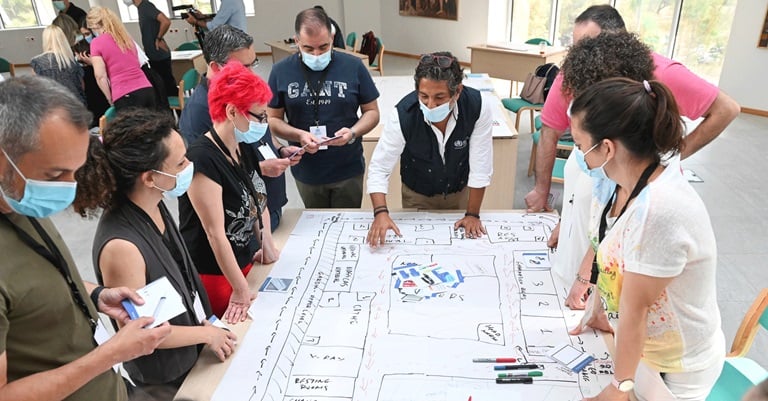

Compendium of WHO and other UN guidance on health and environment

Guidance on air pollution and health
- Ambient air pollution
- Indoor air pollution, including:
- Particulate matter, carbon monoxide and other pollutants from incomplete combustion processes
- Second-hand tobacco smoke
- Dampness and mould
The combined effects from ambient (outdoor) air pollution and indoor air pollution cause approximately 7 million premature deaths every year, largely as a result of increased mortality from stroke, IHD, COPD, lung cancer and acute respiratory infections. Air pollution can occur in both the outdoor and indoor environments. Cook-stoves in homes, motor vehicles, industrial facilities and forest fires are common sources of air pollution. Air pollutants with the strongest evidence for adverse health outcomes include particulate matter (PM; both PM2.5 (i.e. particles with an aerodynamic diameter equal to or less than 2.5 μm) and PM10 (i.e. particles with an aerodynamic diameter equal to or less than 10 μm), ozone (O3), nitrogen dioxide (NO2), sulfur dioxide (SO2) and carbon monoxide (CO). Air pollution is however composed of many more pollutants.
Ambient air pollution

Air pollution originates from numerous sources of emission, both natural and anthropogenic, with the latter becoming globally dominant since the beginning of industrialization. The process of combustion is the greatest contributor to air pollution, in particular, combustion of fossil fuels and biomass to generate energy. Outdoor combustion sources include ground, air, and water transport; industry and power generation; and biomass burning, which includes controlled and uncontrolled forest and savannah fires and agricultural waste burning as well as waste burning in urban areas. Other sources and processes contributing to outdoor pollution are re-suspension of surface dust and construction activities. Long-range atmospheric transport of pollutants from distant sources contributes to local pollution, particularly urban air pollution.
Over 90% of people live in places where the air is unhealthy to breathe, resulting in 4.2 million deaths globally each year (2016 data). Of all deaths from ambient air pollution, 38% were due to IHD, 20% were due to stroke and 43% were due to COPD.
Air pollution has an especially devastating impact on children’s health and has been linked to respiratory infections, adverse birth outcomes, adverse impacts on brain development and lung function, obesity, asthma, otitis media, cancers and increased mortality. Air pollution also disproportionally affects older people.
Indoor air pollution: household air pollution, second-hand tobacco smoke, dampness, and mould

Almost half of the world’s population live in households polluted with smoke from cooking with unclean fuels and technologies. Exposure is particularly high among women and young children, who spend the most time near the domestic hearth. The fine PM (e.g. PM2.5 and PM10) component of this pollution mix leads to an estimated 3.8 million deaths per year (2016 data). Of those 3.8 million deaths, 27% were due to IHD, 18% were due to stroke and 54% were due to COPD. Household air pollution is responsible for 45% of all pneumonia deaths in children aged under 5 years and contributes to 28% of all pneumonia deaths in adults.
In addition, small PM and other pollutants in indoor smoke lead to airway inflammation, which impedes normal immune function and the oxygen-carrying capacity of the blood.
Exposure to second-hand tobacco smoke and radon cause 1.3 million and 84 000 deaths per year (2019 data) respectively.
Download the guidance on air pollution and health
Read more
Related health topics

